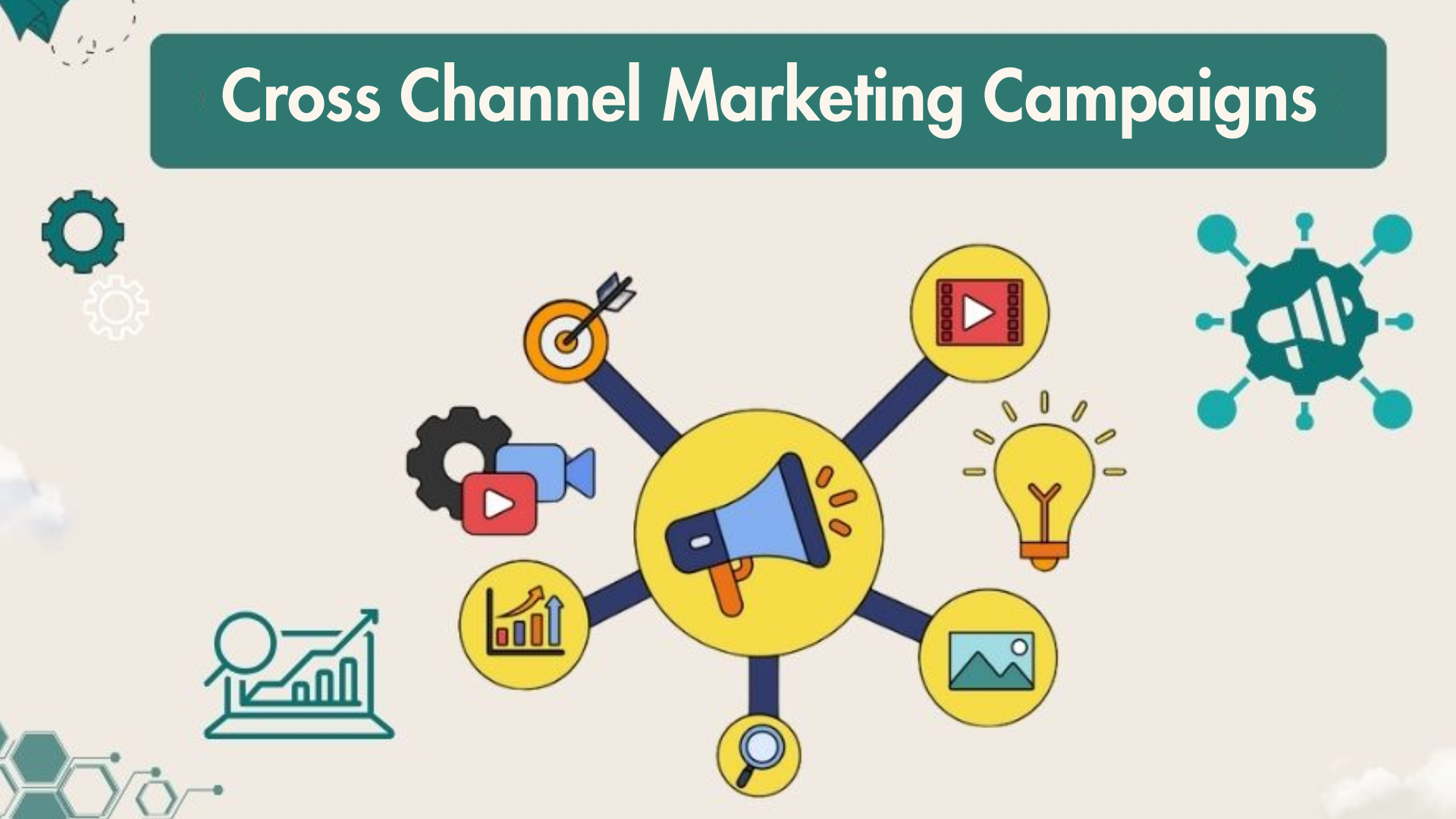What Are Cross Channel Marketing Campaigns and Why Do They Matter?

Ever feel like your customers are everywhere, but your message isn’t reaching them? You post on social media, run ads, send emails, and maybe even push SMS alerts. But somehow, engagement feels scattered. The missing piece? A connected approach is called cross channel marketing campaigns.
What Does a Unified Multi-Platform Strategy Look Like?
It’s a cohesive strategy that engages customers across platforms such as email, social media, paid ads, SMS, and websites by delivering consistent messaging at every stage of their journey. The emphasis is on consistency. Instead of treating each channel like a silo, cross-channel marketing ensures that messaging flows logically and cohesively, no matter where the customer interacts with your brand.
They unify content and strategy across platforms, enabling brands to deliver a seamless customer experience that drives engagement and conversions.
Why Cross-Channel Strategies Outperform Single-Channel Approaches
Customers don’t stick to one channel. They read an email on their phone, scroll Instagram on a tablet, and complete a purchase on a laptop. A disjointed message across these touchpoints leads to confusion or drop-off.
When done right, cross-channel efforts result in:
-
More touchpoints reinforcing a single message
-
Better customer engagement due to personalized, contextual content
-
Increased ROI and conversion rates driven by more precise, coordinated targeting.
-
Stronger brand recall and user trust over time
Think of it as conducting an orchestra. Each instrument (or channel) must play in sync to produce harmony, not noise.
Building a Cross-Channel Campaign That Works
To execute effectively, start by understanding your audience. Analyze their preferred platforms, behaviours, and patterns. Do they respond to email, or are they more active on Instagram or engaging with a YouTube campaign? That insight should guide channel selection.
Once you know where they are, clarify your objective. Whether it’s product sales, signups, or event attendance, every touchpoint should support this single goal.
Now, choose your channels. Quality trumps quantity; focus on where you can make the most impact. A strong message on two channels is better than scattered efforts on five.
Next comes consistency. Visual branding, tone, and messaging must align. If your email says "Limited-Time Offer," your ad and landing page should reflect the same urgency, not a different message.
Also, personalize content. Users expect brands to understand their preferences. Use behaviour-triggered automations, like sending an SMS to someone who clicked your ad but didn’t check out.
Finally, track performance holistically. Don’t measure each channel in isolation. Look at the full journey, how users moved between touchpoints, interacted with visual ads, and what drove the final action.
Cross Channel vs Multi-Channel Marketing
At first glance, the two sound similar. But there’s a fundamental difference. Multi-channel marketing means having a presence on multiple platforms without coordinated messaging. Cross-channel marketing takes it further by integrating those efforts into a cohesive strategy.
Imagine receiving a product recommendation in an email, seeing the same product in a Facebook ad, and then receiving a discount code via SMS, all tied to your previous browsing behaviour. That’s cross-channel in action. Multi-channel, on the other hand, might show you unrelated content in each space.
Real-World Example
Let’s say an e-commerce fashion brand is launching a new collection.
-
First, a teaser is shared via email to VIP customers.
-
Instagram ads target users who recently visited the website.
-
A blog post goes live with behind-the-scenes content.
-
Those who abandon carts get a friendly nudge via SMS.
-
Days later, a final “last chance” offer hits their inbox.
At every step, the message builds on the last one, creating a narrative arc. That’s the power of a truly connected campaign.
Mistakes to Avoid
One common pitfall is inconsistent messaging across platforms, which can confuse or alienate users. Another is trying to be everywhere without the resources to execute properly. More channels aren’t always better; they’re only powerful when they support a unified goal.
Additionally, avoid overlooking attribution. You need analytics that show not just which channel drove conversions, but how different channels worked together. Without that data, you’re flying blind.
You can also watch : How To Search Ads With AI-Based Sorting | PowerAdSpy
Final Thoughts: The Case for Cross-Channel Marketing
Modern consumers don’t think in channels; they move fluidly between them. If your brand doesn’t adapt, you risk losing attention to those who do. By integrating your efforts into a cohesive, cross channel marketing campaign, you meet customers where they are, on their terms, with a consistent message.
This approach isn’t just smarter, it’s necessary.
Frequently Asked Questions
What’s the main goal of a cross-channel campaign?
To deliver a seamless and consistent brand experience across platforms, improving engagement and conversion.
Is it the same as omni-channel marketing?
Not quite. Omni-channel strategies often include deeper integration with sales and customer service. Cross-channel focuses on aligning marketing messages across multiple platforms.
How many platforms should I include?
Start with two or three that perform best with your audience. Expand as your strategy matures and tools support deeper integration.
- Art
- Causes
- Crafts
- Dance
- Drinks
- Film
- Fitness
- Food
- Games
- Gardening
- Health
- Home
- Literature
- Music
- Networking
- Other
- Party
- Religion
- Shopping
- Sports
- Theater
- Wellness



